Let’s Talk Plastisol Ink
Plastisol, as discussed in our blog post, ink systems overview is the most common ink used to screen print textiles in the apparel industry. It is well suited for light and dark fabrics. It’s also well suited for a multitude of fabric blends and man made materials when formulations and catalysts are matched to the material. So today, let’s talk plastisol and discuss some of the things we can do with it.
Most plastisol is comprised of a base containing a plasticizer and a PVC resin. It is thixropic in nature, meaning it thins when sheared during the printing process. Pigments are carried by the base, sometimes referred to as the vehicle, in a suspension. When cured at around 320-330F, the plasticizer and PVC resin fuse and the ink creates a mechanical bond with the fibers of the garment. This creates a vibrant, opaque, extremely durable and long lasting print when cured correctly. In many circumstances, the print will outlast the life of the garment. When the artwork is properly separated, plastisol can often be printed wet on wet, which results in high production speeds. The viscosity and opacity is readily modifiable allowing for a wide range of print possibilities. Modern plastisols flash dry quick at around 280F and have a low after tack. This allows the printing of top colors quickly; as opposed to a waterbased or discharge ink, where the water has to be dried out first. This causes hotter pallet temperatures, which negatively effect the subsequent print colors.
Polyester, and their blends, require special consideration regardless of ink system. Low bleed plastisol ink allows us to print on cotton / polyester blends, as well as cotton / poly / rayon (triblends) and 100% polyester garments. Polyester fabric has a tendency to both subliminate and outgas around the same temperature that plastisol ink cures. This poses certain challenges that must be overcome in the ink chemistry. Low bleed inks contain dye blocking agents, along with agents that lower the cure temp to reduce sublimation. These inks are more expensive due to the chemistry of the ink, but are mandatory to prevent dye migration. A classic example is the red 50/50 blend, printed with white ink which turns pink 24-48 hours after printing. This happens as the dye migrates from the polyester fibers to the ink layer. Dye blocking, low bleed inks help mitigate this risk, but are not always fool proof. For 100% polyester, especially digital camo or garments that are known to be bleed happy, we will utilize a silicone based ink.
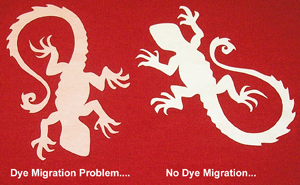
Since plastisol inks do not dye the fabric, but rather create a mechanical bond and sit on top of the garment fibers, the resulting print does have a “hand.” The “hand” is the term that we use to describe the feel of the print itself. If there is a very large print area, like a stop sign for example, the “hand” can be very noticeable. Having a large sweat patch on your garment is in no way desirable by the end user, especially when printed on a lightweight shirt. Enter the world of additives. An additive such as “soft hand base,” does exactly what the name implies. It softens the hand and in high ratios increases the translucency. Alternately, curable reducer is a thinner which reduces the thickness of the ink itself, while also reducing opacity. Ink additives, in addition to proper mesh selection and the use of highlight white screens, drastically reduce the ink deposit and the hand of the print. In the case of a simulated process print, a halftone underbase is usually used rather than a solid spot underbase, which makes for a very nice, soft hand print even with many overprint colors.
Sometimes the application calls for a different type of additives:
- Puff additive can be used to create 3D puff effects; when designed into the artwork this can be very fun, especially for kids.
- Photophosporent additive can be mixed in or printed as a stand alone ink for a glow in the dark effect.
- Nylobond allows us to print on substrates that plastisol would not ordinarily bond to, such as nylon. This is extremely useful for umbrellas, nylon bags, and windbreakers. Nylobond also lowers the cure temperature, preventing dye migration on some substrates and allowing the printing of polypropylene materials.
- Shatter base, can create a unique tattered, cracked and worn look, while still providing excellent adhesion and durability.
- Stretch additive can be used to more easily print on spandex blends.
- Suede additive can be used as either as a dulling paste for a matte finish in lower concentrations, or in higher concentrations for a suede or leather effect
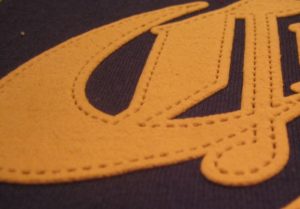
Here is a useful example of great artwork, plastisol ink, and some suede additive. With planning, the artist and screen printer were able to create a visual that mimics a leather patch.
There are dozens of other additives available that can be used to enhance any print.The availability of additives make plastisol one of the most versatile, consistent, and useful ink systems for textiles. When additives and specialty inks are thought about ahead of time and incorporated to the design, results can be stunning.
Some examples of specialty inks:
- Reflective ink, contains millions of microspheres suspended in the base, which when hit with a beam of light, reflect that light back to its source hundreds of feet away. This has been very popular with construction workers, runners, and anyone wanting to be seen at night.
- High density inks can be employed to create 3D effects, standing as much as 1/8″ off the surface of the garment. This is great for solid spot colors.
- Metallic, shimmer, and glitter inks are fairly self explanatory, and are commonly used in screen printing.
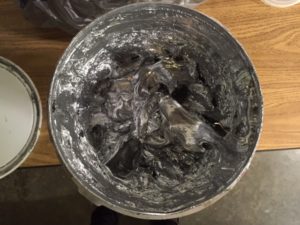
As you can see there are many benefits to using plastisol ink, and when handled and disposed of properly they are even considered to be very environmentally friendly. They emit no VOCs, and contain no evaporative solvents that pollute the air. In addition, many plastisol inks on the market are now phthalate free. Quality inks are not cheap, therefore very little is ever left on the screen. Since they never dry in the air, they can be cleaned out and reused. Any remaining residue can be cleaned up with soy based solvents, filtered, and the solids cured into a block for safe disposal. In this way, plastisol is one of the most eco friendly inks on the market.
As new garment materials and innovative blends make their way into the marketplace, plastisol will continue its evolution to meet the demand of this ever-changing industry. When used in conjunction with the proper mesh, print parameters, and variable control, plastisol is amazing. Countless award winning prints have been created with this ink system, and millions world wide use and wear it every day.
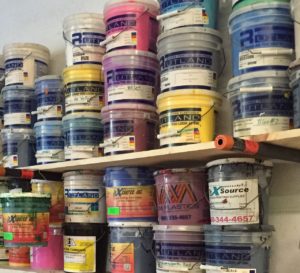
Comments are closed.

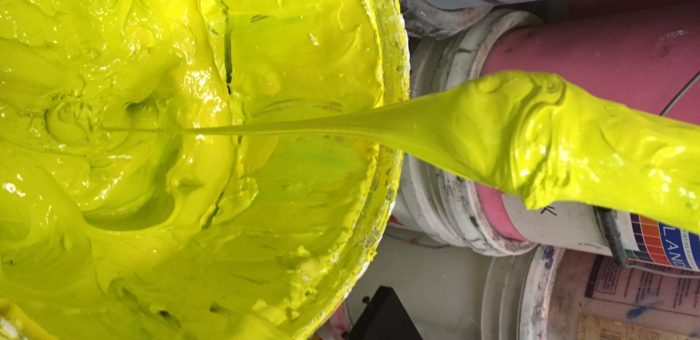
Recent Comments